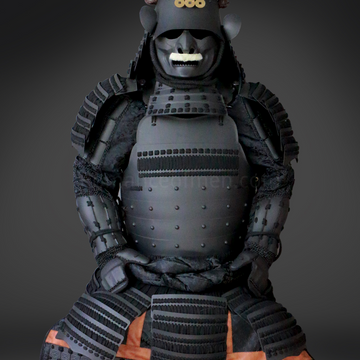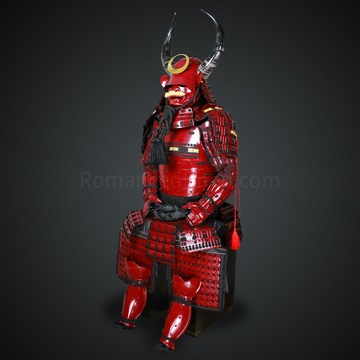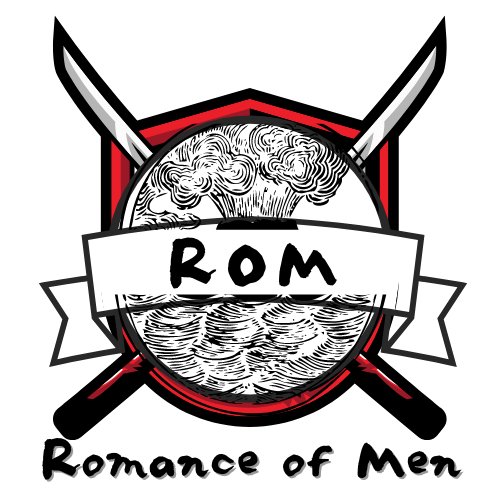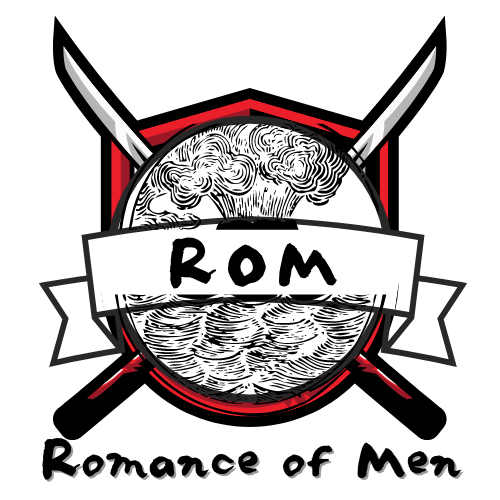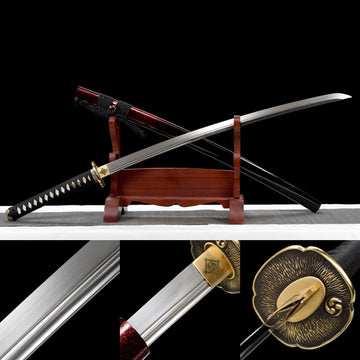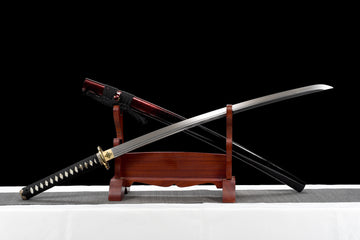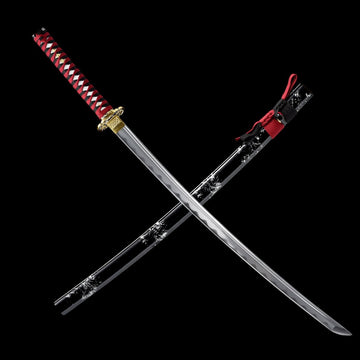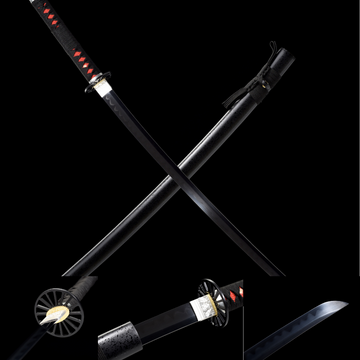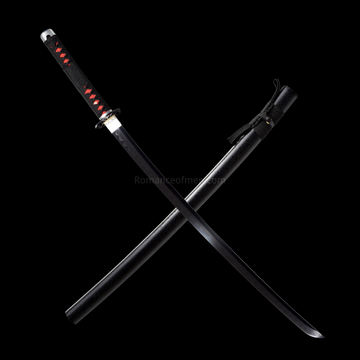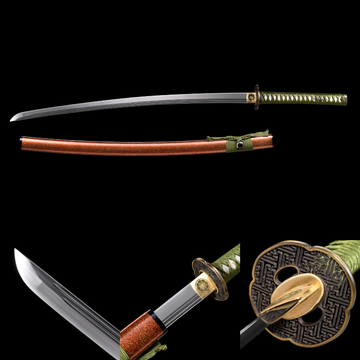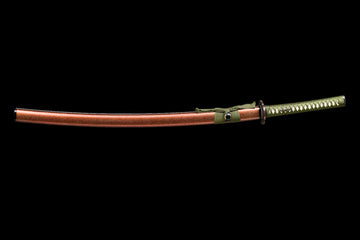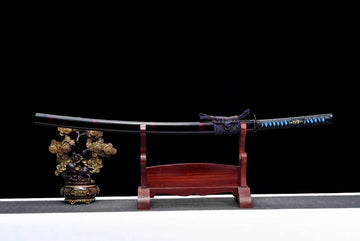Japanese Sword Names: The meaning and story behind
Table of Content
-
Japanese sword naming system
-
Names after the Owner
-
Name after legends
-
Names after the Sharpness
-
Witty Sword Names
-
Name after the sword shape
-
Names after the best work by a bladesmith
-
Cool Japanese sword names in real life
-
Cool Japanese sword names from anime
What is so interesting about Japanese sword names
Just as there are legendary European swords like Joyeuse or Excalibur, and famous Chinese swords such as Ganjiang (干将) and Moye (莫邪), Japan also has a rich history of iconic swords—many of which have especially evocative and poetic names.
In fact, Japanese swords often go a step further: their names give the blades a soul and a personality. These names are not just labels; they reflect the sword’s story, its craftsmanship, its wielder, and even its spiritual essence. Understanding the meaning behind a sword’s name can greatly enhance your appreciation for it—and that’s one of the unique joys of Japanese sword culture.
Japanese sword naming system
There are 3 types of name for a Katana, 1 the "mei" (銘), is the inscription on the Nakago (tang) of the blade. 2 is The "gou" (号), which is an official name of the sword, an 3 is the "tsūshō" (通称) or "zokushō" (俗称), which are common or colloquial names.
Gou is most common name for a sword, even you are not Japanese sword expert, you must have heard some famous katana, like the Masamune, Kamakura Ichimonji etc. Japanese will give name to famous things, not just katana, other weapons like Yari, Naginata even their Japanese armor etc, here we will introduce some common ways of how they name it:
Noted: It’s common that a sword could has different names.
Common misunderstanding: Uchigatana(打刀), Tachi(太刀), Wakizashi(脇差) etc, they refers to a type of Japanese sword, in this article we are referring to the name of a specific sword.
Names after the Owner
Naming the katana after the owner is very common. A famous example is the Uchigatana Ishida Masamune (石田正宗). It was used by Ishida Mitsunari (石田三成), and made by the legendary swordsmith Masamune during the late Kamakura period (14th century).
So the katana name Ishida Masamune (石田正宗), is a combination of Ishida 石田 & Masamune 正宗.

You can think of the swordsmith’s name almost like a brand. Many renowned blades were made and named by Masamune, often combining the name of the owner or other naming method (we will introduce later). Examples include Hyūga Masamune (日向正宗) and Taro Masamune (太郎正宗).This naming pattern—ending with the swordsmith’s name—is very common in Japanese swords.
Name after legends
This is problery the most interesting way of naming a katana. The most famous sword named in this way is the 鬼丸国綱 Onimaru Kunitsuna, Onimaru 鬼丸 means demons, and Kunitsuna is the bladesmith’s name.

The name is from a legend of Hojo Tokiyori北条時頼, Hojo Tokiyori was plagued by nightmares of small demons. One night, an old man in his dream, claiming to be the "incarnation of Awataguchi Kunitsuna 粟田口国綱の化身," advised him to clean the rust from his sword and place it against the wall. Tokiyori followed the advice, and during the night, the sword fell, cutting a demon-shaped brazier in half. Afterward, Tokiyori’s nightmares stopped, and the sword was named Onimaru, symbolizing its power to drive away evil spirits. It became a cherished heirloom of the Hojo family.
Names after the Sharpness
One of the factor contribute to the famous of katana is it’s sharpness. So it’s natural that some katana with exceptional sharpness will get a name for it. An example is the sword Heshikiri Hasebe へし切長谷部, へし切 (Heshikiri) means to "to cut through" or "to slash through.", 長谷部 (Hasebe) is the name of the swordsmith, Hasebe Kunishige 長谷部国重.

Heshikiri Hasebe was owned by Oda Nobunaga, once used the sword to strike down a tea servant who had committed a mistake. The servant, attempting to flee, hid behind a shelf in front of Nobunaga, and it is said that Nobunaga, in a single blow, struck both the servant and the shelf.
Other famous katana using sharpness to name it, like 燭台切光忠 Shokudai Kiri Mitsutada, a famous Tachi made 光忠 Mitsutada, 燭台切 Shokudai Kir means cut down candlestick, it was from a story that Date Masamune once cut down a servant together with an iron candlestick.
Witty Sword Names
Some swords have names with a clever or witty twist. One example is Kasenn Kanesada 歌仙兼定, a sword named after the "Thirty-Six Immortals of Poetry" (Sanju-Rokkasen 三十六歌仙), because it was said to have been used to kill 36 servants. Those swords names are more difficult to understand unless you know Japanese.
Name after the sword shape
Some swords got their name based on the shape. One example is Atsu Fujishiro (厚藤四郎), Atsu 厚 means thick, and Fujishiro 藤四郎 is the bladesmith name. This tanto(短刀) is named for its thicker-than-usual blade.

Names after the best work by a bladesmith
An example of a sword with a name that represents its outstanding craftsmanship is Ichigo Hitofuri 一期一振, a sword made by the swordsmith 粟田口吉光 Awataguchi Yoshimitsu. He was known for making Tanto, and this was the only Tachi made by him during his lifetime, the name literally means “a masterpiece made only once in a lifetime”

Cool Japanese sword names in real life
Many Japanese swords carry names rooted in legends or famous historical tales. Through these names, we get a glimpse into the rich culture of Japan and the spirit of the samurai. Here are some well-known Japanese sword names that reflect that heritage:
波游ぎ兼光 Hamayugi Kanemitsu: 波游ぎ (Hamayugi) means "swimming,", while 兼光 (Kanemitsu) is the bladesmith's name. This sword earned its name because of its legendary sharpness—during a brawl at a ferry dock, it was used to cut a man so precisely that the wounded victim, unaware of his injury, continued swimming until reaching the opposite shore, only to have his body split in two by the blade’s fearsome edge.
骨喰藤四郎 Bone-Eater Fujishiro: “Bone-Eater” evokes the sword’s fearsome cutting ability—it was said that even a playful swing could shatter a bone—while “Fujishiro” is the name of its maker, Awataguchi Yoshimitsu of Yamashiro (now Kyoto) from the mid-Kamakura period.
走雲 Soun: “走雲” (Soun), meaning “Running Clouds.” It got the name because the of the striking, irregular hamon line that looks like wind-driven clouds, the blade is further adorned with an intricate engraving of “倶利伽羅竜” (Kurikara Ryu), a design reminiscent of a dragon emerging through the clouds.
童子切安綱 Dojigiri Yasutsuna: This is one of the "Five Swords Under Heaven" (天下五剣 Tenka-Goken), 5 best swords in Japan. The name 童子切 Dojigiri means slayer of Doji, Doji is a mythical demon leader in Japan, known for abducting humans alongside his band of minions. The hero Minamoto behead this demon using Dojigiri, hence the name.

五虎退 Gokotae: This tanto was forged by the renowned Kamakura-era bladesmith Fujishiro Yoshimitsu. The name "Gokotae" means scare off 5 tigers, it originates from a tale of a messenger of Ashikaga Yoshimitsu’s diplomatic mission who, while in Chūgoku region, repelled a tiger with this very blade. Although the sword’s dazzling brilliance did make the tiger retreat in fear, the original account was later exaggerated from one tiger to five.

薬研藤四郎 Yagen Tōshirō: 薬研 Yagen means medicine grinder. The owner Hatakeyama Masanaga found himself besieged by his enemies and try to commit seppuku with this tanto. however it failed to pierce his abdomen, After repeated futile attempts, the enraged Masanaga hurled the weapon to the ground, where it miraculously pierced through an iron medicine grinder known as a "yagen" used for compounding herbs. This legend gave this tanto the name Yagen Tōshirō, shows it’s quality “Strong but unwillingness to cut its lord”

Cool Japanese sword names from anime
The Japanese talent for meaningful names isn’t limited to real life—it extends into anime as well. Here are some famous katanas from anime with especially cool names:
日輪刀 Nichirin Swords: Nichirin literally means sun blade, from the manga and anime series "Demon Slayer: Kimetsu no Yaiba." In the story, these swords are the only weapons capable of killing demons, as they are forged from a rare ore that absorbs sunlight. They change color according to their user’s characteristics, for example Tanjiro’s katana is black, Giyu’s katana is blue, Rengoku’s katana is red etc.
和道一文字 Wado Ichimonji : “和道” means “the way of harmony” (or “Japanese way”) and “一文字” means “one character” or “a single, unbroken line.” Zoro inherited this sword from his late friend and rival Kuina, keeping her memory alive as he chased his dream of becoming the greatest swordsman.
三代鬼徹 Sandai Kitetsu: “三代” means “third generation,” and “鬼徹” can be interpreted as “demon cutter” or “demon-slaying”. In Loguetown, Zoro accepted the cursed Sandai Kitetsu, taking it on as a risky challenge to prove his fate.
秋水 Shusui: “秋水” translates directly as “autumn water,” On Thriller Bark, after defeating the zombie samurai Ryuma, Zoro claimed Shusui, a sword famed for its power and history.
閻魔 Enma: “閻魔” refers to the legendary judge of the dead in Buddhist mythology, the ruler of hell. In the Wano arc, Zoro received Enma, a strong blade once held by the legendary samurai Kozuki Oden, marking a new stage in his journey
*Katana Image source: Touken-world


